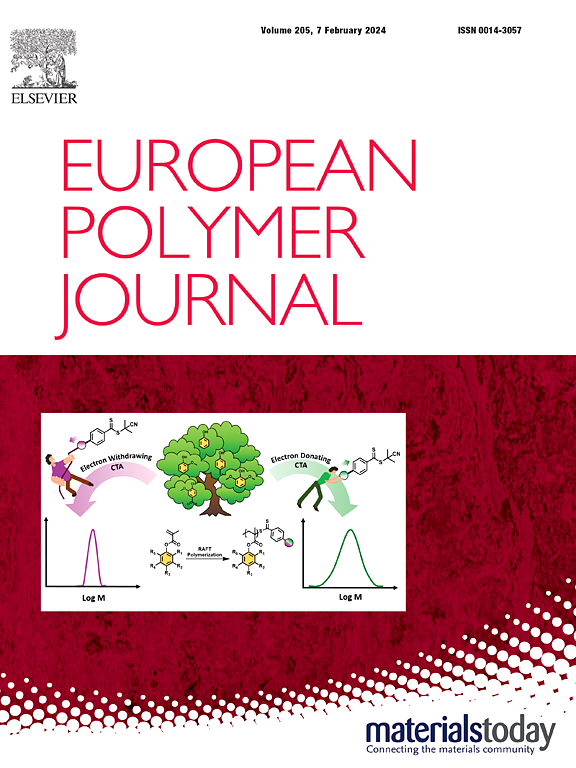Synthesis of conjugated copolymers containing NBF2O units and their application for photocatalytic hydrogen evolution
IF 5.8
2区 化学
Q1 POLYMER SCIENCE
引用次数: 0
Abstract
Donor/acceptor (D-A) conjugated copolymers, due to their superior optoelectronic properties, have attracted significant attention. In this study, we employed the amino-yne click reaction and BF2-complexation to synthesize the D-A conjugated copolymers. The electron-accepting OBF2N moieties and different types of electro-donating units, such as phenyl alkoxy (OTP), triphenylamine (TPA) and fluorene (FL), were combined to synthesize the conjugated copolymers OTP-BF2-FL and TPA-BF2-FL. The resulting conjugated copolymers showed significant red-shifted absorption and emission bands through BF2 coordination due to the intramolecular charge transfer (ICT) character. Moreover, the planar OTP unit was more conducive for the expansion of conjugated systems, thereby enabling longer absorption/emission wavelengths (λabs = 500 nm and λem = 627 nm in THF) to OTP-BF2-FL. Although the highly twisted structure of TPA group was detrimental towards the expansion of π-conjugation, it could effectively improve the luminescence efficiency of TPA-BF2-FL in both the solution and solid states (ΦF = 24.5 % in toluene, ΦF = 12.1 % in solid). Finally, we demonstrated the application of OTP-BF2-FL and TPA-BF2-FL in photocatalytic hydrogen evolution. Photocatalytic H2 evolution experiment results revealed that the photocatalytic H2 evolution rate (HER) of OTP-BF2-FL and TPA-BF2-FL were 85 μmol g−1h−1 and 237 μmol g−1h−1, respectively.

求助全文
约1分钟内获得全文
求助全文
来源期刊

European Polymer Journal
化学-高分子科学
CiteScore
9.90
自引率
10.00%
发文量
691
审稿时长
23 days
期刊介绍:
European Polymer Journal is dedicated to publishing work on fundamental and applied polymer chemistry and macromolecular materials. The journal covers all aspects of polymer synthesis, including polymerization mechanisms and chemical functional transformations, with a focus on novel polymers and the relationships between molecular structure and polymer properties. In addition, we welcome submissions on bio-based or renewable polymers, stimuli-responsive systems and polymer bio-hybrids. European Polymer Journal also publishes research on the biomedical application of polymers, including drug delivery and regenerative medicine. The main scope is covered but not limited to the following core research areas:
Polymer synthesis and functionalization
• Novel synthetic routes for polymerization, functional modification, controlled/living polymerization and precision polymers.
Stimuli-responsive polymers
• Including shape memory and self-healing polymers.
Supramolecular polymers and self-assembly
• Molecular recognition and higher order polymer structures.
Renewable and sustainable polymers
• Bio-based, biodegradable and anti-microbial polymers and polymeric bio-nanocomposites.
Polymers at interfaces and surfaces
• Chemistry and engineering of surfaces with biological relevance, including patterning, antifouling polymers and polymers for membrane applications.
Biomedical applications and nanomedicine
• Polymers for regenerative medicine, drug delivery molecular release and gene therapy
The scope of European Polymer Journal no longer includes Polymer Physics.
 求助内容:
求助内容: 应助结果提醒方式:
应助结果提醒方式:


